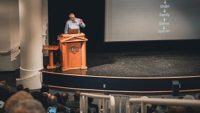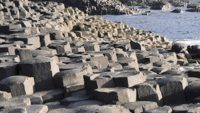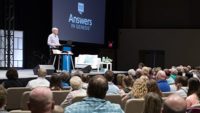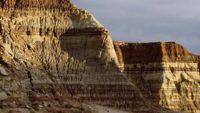By Ken Ham It’s summertime here in the United States, and with school out, children have lots of extra free time. Many teachers and others encourage kids to keep reading over the summer, and many libraries release summer reading lists for various age groups to help keep children reading. So we’ve put together our own suggested Here’s just a sampling of some wonderful books included (for various ages) on these lists: When You See a Rainbow A Special Door The Answers Book for Kids, Volume 1 I Really, Really, Really Like Fossils Dinosaurs for Kids Noah: Man of God The [More]
By Ken Ham When was the last time your pastor or other Christian leader in your church got away for a time of rest, encouragement, and solid Bible teaching? It’s probably been a while! Pastors do so much and work so hard to serve their congregations. Consider sending them and their wives away for some time to relax and reconnect. We’ve got the perfect event for that—our upcoming Answers for Pastors conference here at the Creation Museum near Cincinnati, October 9–11, 2018. During this conference, pastors, Christian leaders, or anyone who wants to attend will be encouraged to defend the [More]
Naturalistic assumptions can get in the way of understanding the origin of solar system objects. Read More
Riding the rapids between walls of the Grand Canyon, a rafter supposedly peers up at millions of years. How do scientists arrive at such an old age? …read more Source: AIG Daily
By Ken Ham We’re excited to announce a new partnership with the online streaming service PureFlix.com! This relationship will provide you with all of our Answers in Genesis video content whenever you want from wherever you are! If you’re a subscriber to PureFlix.com, you will soon have access to the entire digital library of Answers in Genesis teaching, children’s videos, Ark Encounter and Creation Museum content, and more—all for the normal PureFlix.com subscription price. There’s no additional cost for you to access the AiG videos. We’re increasingly seeing an anti-Christian sentiment arising and Christian speech being censored from public places, [More]
By Ken Ham It seems extraterrestrial aliens make the news quite frequently (despite the fact that they don’t exist!). Every few weeks there’s a new study about why we supposedly haven’t found them, when we will find them, or why they’re no longer around. And a new study, based on the former inhabitants of Easter Island off the coast of Chile, claims the aliens we’re spending billions searching for won’t be found because climate change already killed them. Studies have suggested that perhaps the inhabitants of Easter Island died out due to a depletion of their resources, leading to starvation [More]
Christians and atheists have presuppositions that affect how we interpret facts and evidence. Read More
By Dr. Danny R. Faulkner Sights like a lunar eclipse are possible only because of our moon’s unique relationship to the earth. …read more Source: AIG Daily
By Ken Ham Several months ago, I was invited by a student group to speak at the University of Central Oklahoma. However, after the LGBT group on campus complained about me coming (because I believe marriage is between one man and one woman—which is deemed as hate speech by this group), I was disinvited, despite having a signed contract to speak. This story was carried by news media across the nation, and, due to pressure put on the school, my invitation was reinstated and I, along with Dr. Georgia Purdom of AiG, had a very successful event at UCO. Well, [More]
Are you tired of reading dinosaur books to your kids while trying to filter the evolutionary worldview? ICR just published a new children’s book written by geologist Dr. Tim Clarey and his wife, Reneé. Big Plans for Henry follows the journey of a young duck-bill dinosaur through the pre-Flood world. In addition to the cute, touching, and educational story, the pages are sprinkled with science and Bible fact boxes that … More… …read more Source: icr.org
It’s understandable that many churches are simply overloaded with trying to meet the daily needs of their people. Having a CMI event may be perceived as an extra logistical workload—however, we conduct around 1,200 presentations per year, so this is what we do best. The creation/evolution debate is a specialist issue and we are here to help and make this an easy and enjoyable experience for you. Hosting an event really is as easy as 1…2…3. Read More: Events 1,2,3 – creation.com
“These are, high, high, highly intelligent creatures,” said conservation biologist Reese Halter.1 Halter was speaking of the fascinating bee. Bees are already famous regarding their ability to communicate with other bees through complex dancing routines. Halter’s team also found that bees have puzzle-solving abilities. In 2006, scientists were amazed to discover that bees have a biological clock. … More… …read more Source: icr.org
Is a non-sentient entity a viable cause for the beginning of the universe? Read More
By Ken Ham God expects us to do the best we can with what he has entrusted us with, to engage in the business of the King (the King of Kings) until he returns. …read more Source: AIG Daily
By Bodie Hodge We don’t have to wonder if Paul would have argued against evolutionists—because Acts reveals the surprising answer. …read more Source: AIG Daily
By Dr. Andrew A. Snelling The Giant’s Causeway is Northern Ireland’s most iconic landmark. …read more Source: AIG Daily
By Sarah Chaffee On this episode of ID the Future from the vault, hear the final segment of Dr. Wolf-Ekkehard Lönnig’s discussion of the long-necked giraffe. Tune in as Lönnig examines the potential of sexual selection as an evolutionary explanation of the long-necked giraffe and considers intelligent design as an alternate explanation. Read his book on the giraffe here! Please consider donating to support the IDTF Podcast. Your browser does not support playing Audio, please upgrade your browser or find our podcast on podOmatic Download Episode …read more Source: id the future
By Ken Ham If you don’t often think of radio and email together, think again! We’re very thankful that Answers with Ken Ham, my daily 60-second radio program that’s now on its 130th volume (almost 24 years of broadcasting), is heard on nearly 1,000 radio stations throughout the US, with a Spanish-language version heard on many more stations throughout Mexico and other nations. But it’s also available to you through your email inbox. This email includes a link to the radio program and a full transcript, a link and a teaser from my blog, and other features. Although many stations [More]
By Ken Ham Can we know Jesus’ thoughts on gay “marriage”? Recently, former US President Jimmy Carter, a professing Christian and Sunday school teacher at his Baptist church in Georgia, was asked in an interview for his thoughts on gay “marriage” and if he thought Jesus would approve of it. His answer sadly reflects the thinking of many Christians today—an uplifting of their own opinions over God’s Word. President Carter’s answer to the question of whether gay “marriage” conflicts with his faith was, “That’s no problem with me. I think that everybody should have a right to get married, regardless [More]
For decades, creation scientists have debated the level at which the Flood ended in the rock record. In the past, many have based their conclusions on a cursory examination of the rocks, or concentrated only on the strata across the American West. Most agree that the Flood/post-Flood boundary is at one of two levels: 1) at the top of the Cretaceous system, known as the K-Pg (K-T) horizon,1,2 or 2) at or nea… More… …read more Source: icr.org
By Sarah Chaffee On this episode of ID the Future, host Mike Keas interviews Professor Emeritus Michael Flannery (U of Alabama-Birmingham) on evolutionist Kenneth Miller’s new book The Human Instinct: How We Evolved to Have Reason, Consciousness, and Free Will. Miller is prominent as a science educator and supporter of Neo-Darwinian theistic evolution. Flannery, a historian of science, argues that Miller’s attempt to defend human exceptionalism on Neo-Darwinian grounds runs into fatal difficulties, as have similar attempts before. Please consider donating to support the IDTF Podcast. Your browser does not support playing Audio, please upgrade your browser or find our
By Ken Ham My packed speaking schedule usually sends me across the country and even internationally. Because of that, I don’t get to speak here at the Creation Museum as much as I would like, especially for several days in a row. But I’m excited to have a week of speaking sessions coming up right here at the Creation Museum, July 30–August 3, 2018. The talks are offered at no additional cost to museum ticket-holders. At noon each day that week I’ll be in Legacy Hall presenting on a different topic. My talks for this upcoming series include …read more [More]
By Marsha Washburn Nobody ever said parenting would be easy. All the daily struggles seem to keep getting in the way. …read more Source: AIG Daily
Many great Christians have taken their stand upon Scripture’s authority, not compromising with pagan culture. Is your faith as rock solid as theirs in the face of secular dogma? …read more Source: creation.com
By Sarah Chaffee On this episode of ID the Future, biologist Ann Gauger responds to a negative review of the new Crossway anthology Theistic Evolution: A Scientific, Philosophical, and Theological Critique, arguing that parts of the review are confused and contradictory. For instance, Denis Lamoureux uses classic design language while denying design. He says design is all front-loaded so that random evolutionary processes can produce designed outcomes, thus changing the meaning of both “random” and “evolution.” He accuses ID of being theologically driven, apparently unaware that it’s theistic evolution that is theological. And he seeks to support faith through appreciation [More]
By Sarah Chaffee On this episode of ID the Future, Dr. Wolf-Ekkehard Lönnig shares more about why the body plan of the long-neck giraffe could not have evolved in a step-by-step Darwinian fashion. He gives an account of the rational design of the giraffe’s recurrent laryngeal nerve, a feature that Richard Dawkins and other evolutionists claim can only be explained by Darwinian evolution. Please consider donating to support the IDTF Podcast. Your browser does not support playing Audio, please upgrade your browser or find our podcast on podOmatic Download Episode …read more Source: id the future
By Bill Worraker The Genesis Flood produced drastic geological changes involving extremely energetic processes which also generated an enormous heat load. …read more Source: AIG Daily






































